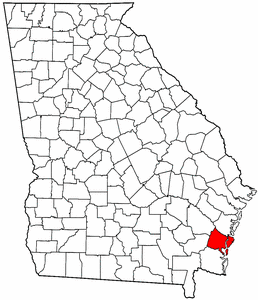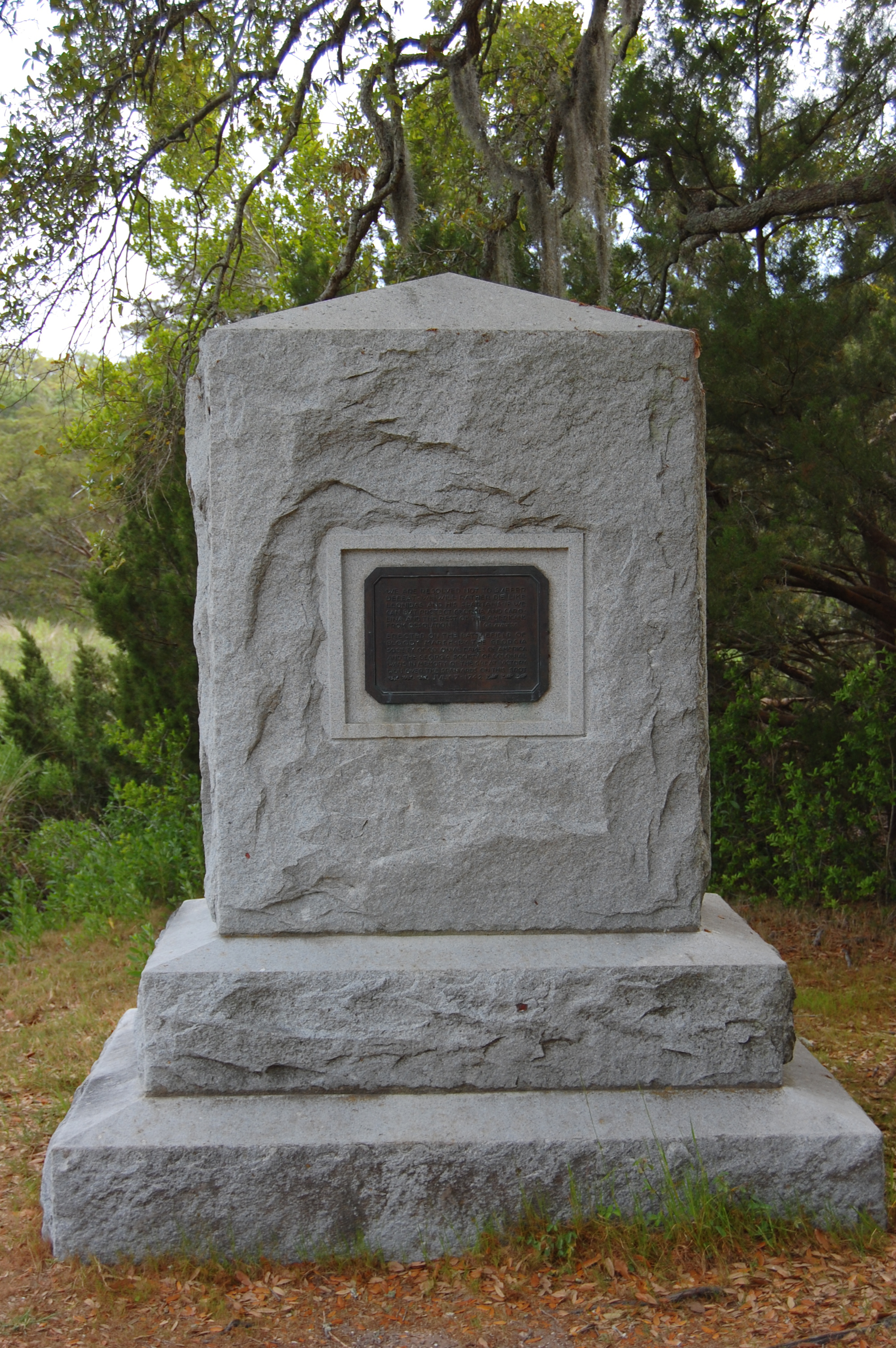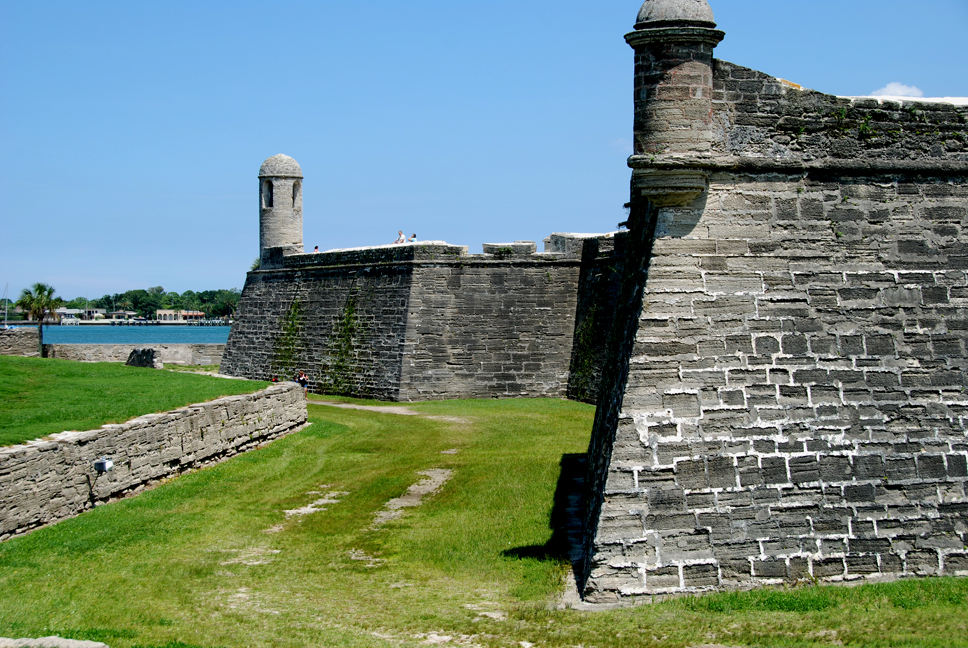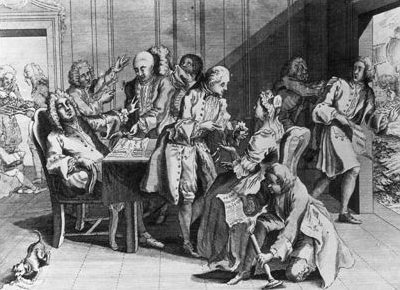|
Battle Of Bloody Marsh
The Battle of Bloody Marsh took place on 7 July 1742 between Spanish and British forces on St. Simons Island, part of the Province of Georgia, resulting in a victory for the British. Part of the War of Jenkins' Ear, the battle was for the British fortifications of Fort Frederica and Fort St. Simons, with the strategic goal the sea routes and inland waters they controlled. With the victory, the Province of Georgia established undisputed claim to the island. It is now part of the U.S. state of Georgia. The British also won the Battle of Gully Hole Creek, which took place on the island the same day. Background James Oglethorpe led the colonization of Georgia for Great Britain and had chosen Savannah as the principal port for the new colony. In the 1730s, Spain and Great Britain were disputing control of the border between Georgia and '' La Florida,'' where the Spanish had several settlements and forts. Given a heightened threat of Spanish invasion, Oglethorpe sought to increase ... [...More Info...] [...Related Items...] OR: [Wikipedia] [Google] [Baidu] |
Invasion Of Georgia (1742)
In the 1742 Invasion of Georgia, Spanish forces based in Florida attempted to seize and occupy disputed territory held by the British colony of Georgia. The campaign was part of a larger conflict which became known as the War of Jenkins' Ear. Local British forces under the command of the Governor James Oglethorpe rallied and defeated the Spaniards at the Battle of Bloody Marsh and the Battle of Gully Hole Creek, forcing them to withdraw. Britain's ownership of Georgia was formally recognized by Spain in the subsequent Treaty of Madrid. Background The colony of Georgia had been an issue of contention between Britain and Spain since its foundation in 1733. Spain claimed the territory for its own colony of Florida and disputed what was regarded as an illegal occupation by the British settlers. The Convention of Pardo in 1739 had attempted to settle the dispute, but Spain still refused to abandon its claim. When the War of Jenkins' Ear broke out that same year, Spain began drawing ... [...More Info...] [...Related Items...] OR: [Wikipedia] [Google] [Baidu] |
Periagua
Periagua (from Spanish ''piragua'', in turn derived from the Carib language word for dugout) is the term formerly used in the Caribbean and the eastern seaboard of North America for a range of small craft including canoes and small sailing vessels. The term ''periagua'' overlaps, but is not synonymous with, ''pirogue'', derived through the French language from ''piragua''. The original periaguas or piraguas were the dugout canoes encountered by the Spanish in the Caribbean. Small craft of greater capacity were created by splitting a dugout and inserting a plank bottom, while the freeboard was increased for sea voyages by adding planks on the sides. By the 18th century the term ''periagua'' was being applied to flat-bottomed boats, which could be 30 feet (10 m) or more long and carry up to 30 men, with one or two masts, which could also be rowed. Later in the 18th century ''periagua'' became the name for a specific type of sailing rig, with gaff rigged sails on two masts that could ... [...More Info...] [...Related Items...] OR: [Wikipedia] [Google] [Baidu] |
Garrison
A garrison (from the French ''garnison'', itself from the verb ''garnir'', "to equip") is any body of troops stationed in a particular location, originally to guard it. The term now often applies to certain facilities that constitute a military base or fortified military headquarters. A garrison is usually in a city, town, fort, castle, ship, or similar site. "Garrison town" is a common expression for any town that has a military base nearby. "Garrison towns" ( ar, أمصار, amsar) were used during the Arab Islamic conquests of Middle Eastern lands by Arab-Muslim armies to increase their dominance over indigenous populations. In order to occupy non-Arab, non-Islamic areas, nomadic Arab tribesmen were taken from the desert by the ruling Arab elite, conscripted into Islamic armies, and settled into garrison towns as well as given a share in the spoils of war. The primary utility of the Arab-Islamic garrisons was to control the indigenous non-Arab peoples of these conque ... [...More Info...] [...Related Items...] OR: [Wikipedia] [Google] [Baidu] |
Gascoigne Bluff
Gascoigne Bluff is a bluff next to the Frederica River on the western side of the island of St. Simons, Georgia which was a Native American campground, the site of a Franciscan monastery named San Buenaventura, and the site of the Province of Georgia's first naval base. It was named for Captain James Gascoigne of the sloop-of-war, HMS ''Hawk'', which led some of the first British settlers to the coast of Georgia. Timber harvested from 2,000 Southern live oak trees from Gascoigne Bluff was used to build the USS ''Constitution'' and the five other original US Navy frigates, under the Naval Act of 1794. The ''Constitution'' is known as "Old Ironsides" for the way the cannonballs bounced off the hard oak planking. This area was one of several St. Simons Island plantations owned by John Couper (father of James Hamilton Couper, see below) who lived at Cannon Point, St. Simons Island, and who donated his library of 20,000 volumes to the Library of Congress. File:Gascoigne Bluff ... [...More Info...] [...Related Items...] OR: [Wikipedia] [Google] [Baidu] |
Manuel De Montiano
Manuel Joaquín de Montiano y Sopelana (January 6, 1685 – January 7, 1762) was a Spanish General and colonial administrator who served as Royal Governor of La Florida during Florida's First Spanish Period and as Royal Governor of Panama. He defended Florida from an attack by British forces in 1740 and launched his own unsuccessful Invasion of Georgia during the War of Jenkins' Ear. Early life Montiano was born in the city of Bilbao, in Biscay, northern Spain. He was a relative of Agustín de Montiano, a dramatist and noted historian who founded the Real Academia de la Historia in 1735 and became its first director. While still a young man, Montiano joined the Royal Spanish Army, and served for three years in the Aragon Regiment. From there he was transferred to Darién in Panama. By 1719, he was a captain of grenadiers and was sent to Oran, in what is now Algeria, where he fought in the defence of the city against the Arabs. Governor of Florida On April 29, 1737, Mo ... [...More Info...] [...Related Items...] OR: [Wikipedia] [Google] [Baidu] |
Castillo De San Marcos
The Castillo de San Marcos ( Spanish for "St. Mark's Castle") is the oldest masonry fort in the continental United States; it is located on the western shore of Matanzas Bay in the city of St. Augustine, Florida. It was designed by the Spanish engineer Ignacio Daza, with construction beginning in 1672, 107 years after the city's founding by Spanish Admiral and conquistador Pedro Menéndez de Avilés, when Florida was part of the Spanish Empire. The fort's construction was ordered by Governor Francisco de la Guerra y de la Vega after a raid by the English privateer Robert Searles in 1668 that destroyed much of St. Augustine and damaged the existing wooden fort. Work proceeded under the administration of Guerra's successor, Manuel de Cendoya in 1671, and the first ''coquina'' stones were laid in 1672. The construction of the core of the current fortress was completed in 1695, though it would undergo many alterations and renovations over the centuries. Though built in part by ... [...More Info...] [...Related Items...] OR: [Wikipedia] [Google] [Baidu] |
Smuggling
Smuggling is the illegal transportation of objects, substances, information or people, such as out of a house or buildings, into a prison, or across an international border, in violation of applicable laws or other regulations. There are various motivations to smuggle. These include the participation in illegal trade, such as in the drug trade, illegal weapons trade, prostitution, human trafficking, kidnapping, exotic wildlife trade, art theft, heists, chop shops, illegal immigration or illegal emigration, tax evasion, import/export restrictions, providing contraband to prison inmates, or the theft of the items being smuggled. Smuggling is a common theme in literature, from Bizet's opera ''Carmen'' to the James Bond spy books (and later films) '' Diamonds Are Forever'' and '' Goldfinger''. Etymology The verb ''smuggle'', from Low German ''smuggeln'' or Dutch ''smokkelen'' (="to transport (goods) illegally"), apparently a frequentative formation of a word meaning "to s ... [...More Info...] [...Related Items...] OR: [Wikipedia] [Google] [Baidu] |
Robert Jenkins (master Mariner)
Robert Jenkins (1730s-40s in Llanelli, Wales – fl.) was a Welsh master mariner, famous as the protagonist of the "Jenkins's ear" incident, which became a contributory cause of the War of Jenkins' Ear between the Kingdom of Great Britain and the Kingdom of Spain in 1739. Returning home from a trading voyage in the West Indies in command of the smuggling brig ''Rebecca'' in April 1731, Jenkins' ship was stopped and boarded by the Spanish guarda-costa or privateer ''La Isabela'' on suspicion of smuggling. According to some accounts, her commander, Juan de León Fandiño, had Jenkins bound to a mast, then sliced off his left ear with his sword and allegedly told him to say to his King "the same will happen to him (the king) if caught doing the same". Another account, in the ''Pennsylvania Gazette'' for 7 October 1731, attributes the assault to the Spanish lieutenant Dorce, who "took hold of his left Ear, and with his Cutlass slit it down; and then another of the Spaniards took hold ... [...More Info...] [...Related Items...] OR: [Wikipedia] [Google] [Baidu] |
Brig
A brig is a type of sailing vessel defined by its rig: two masts which are both square-rigged. Brigs originated in the second half of the 18th century and were a common type of smaller merchant vessel or warship from then until the latter part of the 19th century. In commercial use, they were gradually replaced by fore-and-aft rigged vessels such as schooners, as owners sought to reduce crew costs by having rigs that could be handled by fewer men. In Royal Navy use, brigs were retained for training use when the battle fleets consisted almost entirely of iron-hulled steamships. Brigs were prominent in the coasting coal trade of British waters. 4,395 voyages to London with coal were recorded in 1795. With an average of eight or nine trips per year for one vessel, that is a fleet of over 500 colliers trading to London alone. Other ports and coastal communities were also be served by colliers trading to Britain's coal ports. In the first half of the 19th century, the vast majority ... [...More Info...] [...Related Items...] OR: [Wikipedia] [Google] [Baidu] |
Boarding Party
''Boarding Party'' is a solitaire science fiction board game published by Task Force Games in 1982 that simulates a boarding party of humans trying to deactivate a killer spaceship. Description ''Boarding Party'' is a solitaire microgame in which the player controls a party of humans that must board an automated killer space ship that is temporarily disabled and destroy the central computer before the ship can reboot itself and go on a killing rampage. The player only has 14 turns to accomplish this task. The map represents the narrow winding corridors of the space ship that all lead to the central computer. Automated robots randomly move up and down the corridors at the start of the game. Once the humans have reached the central computer, surviving robots all converge on the central computer room. Publication history ''Boarding Party'' was designed by Thomas Condon, and featured front cover art by William H. Keith Jr. and back cover art by R. Vance Buck. It was published by ... [...More Info...] [...Related Items...] OR: [Wikipedia] [Google] [Baidu] |
Altamaha River
The Altamaha River is a major river in the U.S. state of Georgia. It flows generally eastward for 137 miles (220 km) from its origin at the confluence of the Oconee River and Ocmulgee River towards the Atlantic Ocean, where it empties into the ocean near Brunswick, Georgia. No dams are directly on the Altamaha, though some are on the Oconee and the Ocmulgee. Including its tributaries, the Altamaha River's drainage basin is about in size, qualifying it among the larger river basins of the US Atlantic coast.The Altamaha River Course [...More Info...] [...Related Items...] OR: [Wikipedia] [Google] [Baidu] |
Darien, Georgia
Darien () is a city in and the county seat of McIntosh County, Georgia, United States. It lies on Georgia's coast at the mouth of the Altamaha River, approximately south of Savannah, and is part of the Brunswick, Georgia Metropolitan Statistical Area. It is the second oldest planned city in Georgia and was originally called New Inverness. The population of Darien was 1,975 at the 2010 census. Geography Darien is located at (31.371134, −81.430742). According to the United States Census Bureau, the city has a total area of , all land. Demographics 2020 census As of the 2020 United States census, there were 1,460 people, 957 households, and 609 families residing in the city. 2010 census As of the 2010 United States Census, there were 1,975 people living in the city. The racial makeup of the city was 51.9% White, 44.1% Black, 0.1% Native American, 0.8% Asian, 0.1% Pacific Islander, 0.1% from some other race and 1.1% from two or more races. 1.9% were Hispanic or Latino of ... [...More Info...] [...Related Items...] OR: [Wikipedia] [Google] [Baidu] |










